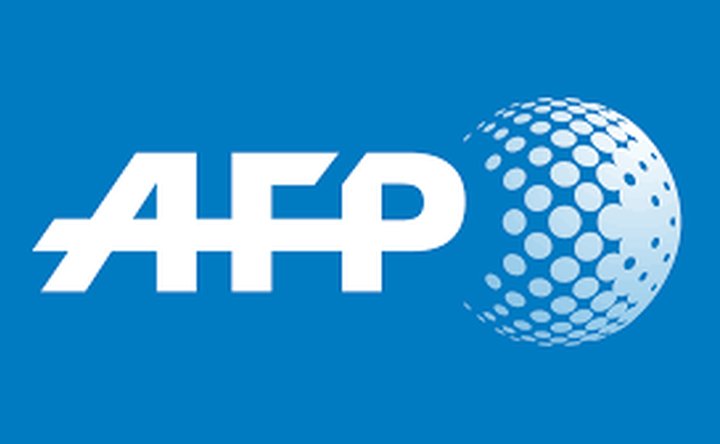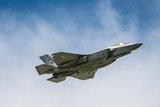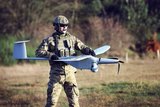NATO announces $1bn upgrade to ageing AWACS fleet
NATO is to upgrade its ageing fleet of AWACS reconnaissance planes at a cost of $1 billion, the alliance announced Wednesday, with still no plan agreed for replacing the system.
The Boeing plane, an icon of the Cold War with its distinctive saucer-shaped radar dome mounted on the fuselage, began NATO service in 1982 and is due to be phased out by 2035.
But the alliance has not yet decided what will replace AWACS, which has seen NATO service during the first Gulf War, the 1990s conflicts in the former Yugoslavia, Afghanistan and most recently supporting the fight against the Islamic State group.
‘I can confirm we will sign a contract upgrading, modernising the AWACS fleet - $1 billion dollars,’ NATO chief Jens Stoltenberg told reporters at a meeting of foreign ministers in Brussels.
‘We are also now looking how to replace the AWACS fleet in the future after 2035.’
The fleet of 14 AWACS planes -- Boeing 707s converted with long-range radar and sensors to give early warning of aircraft, helicopters and missiles -- is the only military equipment NATO itself owns.
Since its inception, the AWACS programme has already cost NATO more than $6.8 billion.
Stoltenberg also confirmed that NATO would soon receive its first Global Hawk high-altitude surveillance drones, which will give commanders on the ground a better picture of combat situations.
More from Digital Battlespace
-
![Babcock nears first customer for Nomad AI translation tool]()
Babcock nears first customer for Nomad AI translation tool
Nomad can provide militaries with real-time intelligence, saving critical time on the battlefield.
-
![AUSA 2025: Israel’s Asio Technologies to supply hundreds of improved Taurus tactical systems]()
AUSA 2025: Israel’s Asio Technologies to supply hundreds of improved Taurus tactical systems
Taurus operates alongside the Israel Defense Forces’ Orion system which supports mission management across tens of thousands of manoeuvring forces, from squad leaders to battalion commanders.
-
![AUSA 2025: Kopin pushes micro-LED plans as China moves faster]()
AUSA 2025: Kopin pushes micro-LED plans as China moves faster
The plan for the new displays follows fresh investment in Kopin’s European facilities by Theon and an order for head-up displays in fielded aircraft, with funding from the US Department of Defense.
-
![AUSA 2025: Persistent Systems to complete its largest order by year’s end]()
AUSA 2025: Persistent Systems to complete its largest order by year’s end
Persistent Systems received its largest ever single order for its MPU5 devices and other systems earlier this month and has already delivered the 50 units to the US Army’s 4th Infantry Division.
-
![Aselsan brings in dozens of companies and systems under the Steel Dome umbrella]()
Aselsan brings in dozens of companies and systems under the Steel Dome umbrella
Turkey has joined the family of countries attempting to establish a multilayered air defence system with government approval in August 2024 for the effort landed by Aselsan. Dubbed Steel Dome, the programme joins Israel’s Iron Dome, the US Golden Dome, India’s Mission Sudarshan Chakra and South Korea’s low-altitude missile defence system.
-
![DSEI 2025: MARSS unveils new agnostic multidomain C4 system]()
DSEI 2025: MARSS unveils new agnostic multidomain C4 system
MARSS’ NiDAR system has been deployed using sensors from static platforms to provide detection and protection for static sights, such as critical infrastructure, ports and military bases.




























